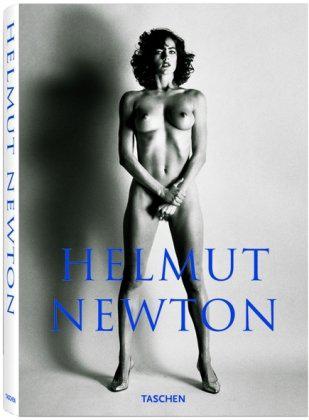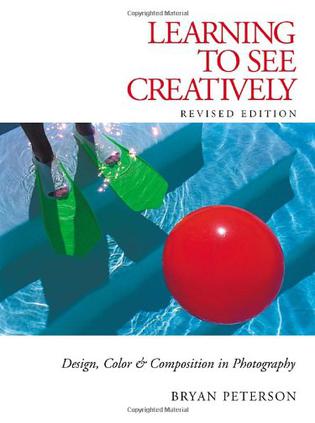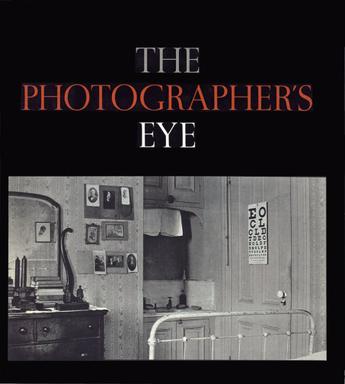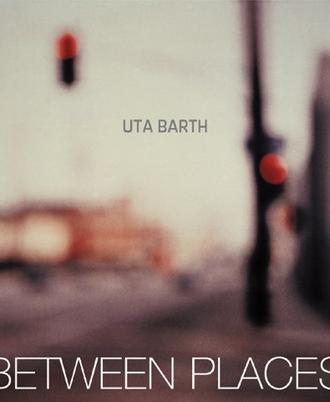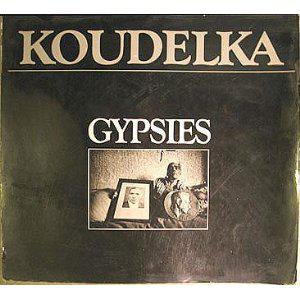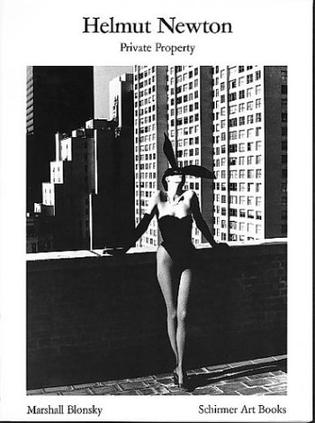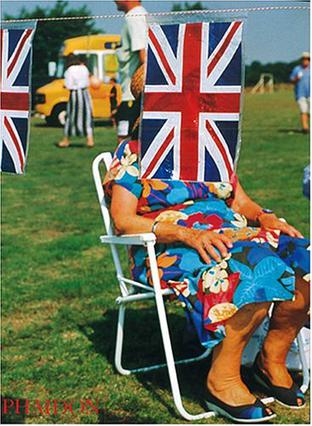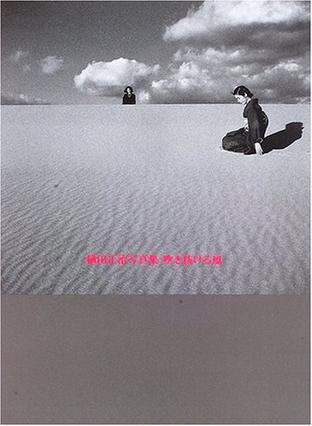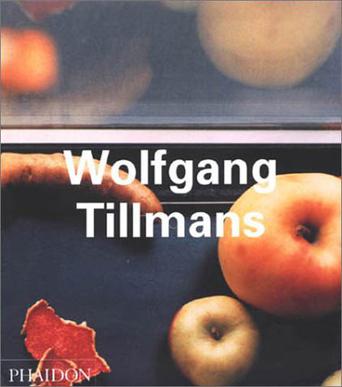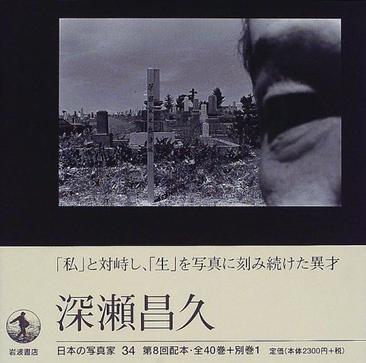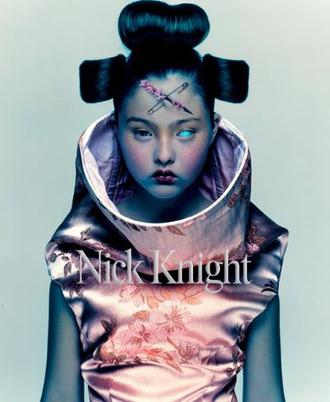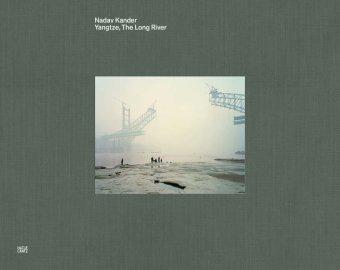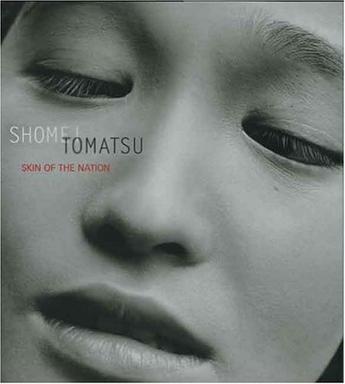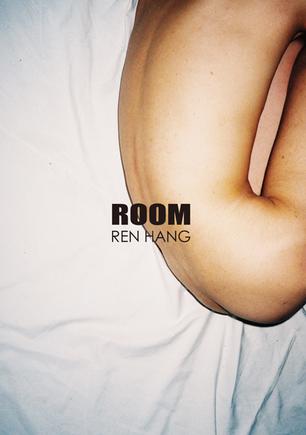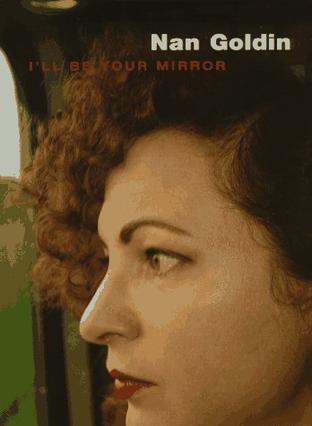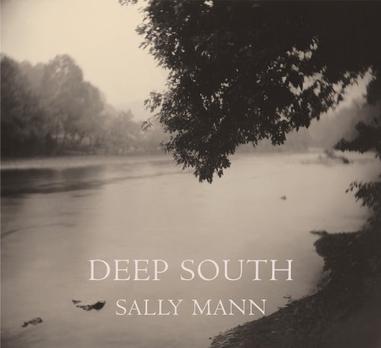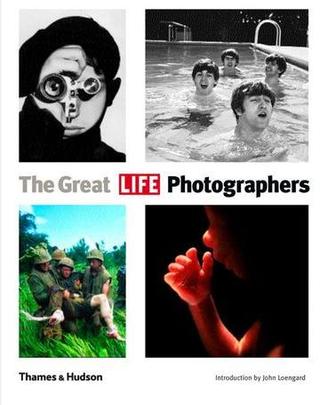欢迎来到相识电子书!
标签:Photography
-
Helmut Newton: Sumo
The biggest, most lavish book production of the 20th century is back! "Sumo" was a titanic book in every respect: a 480-page tribute to the 20th century's most influential, intriguing and controversial photographer, it broke records for weight, dimensions, and resale price. Helmut Newton (1920-2004) always demonstrated a healthy disdain for easy or predictable solutions. "Sumo" - a bold and unprecedented publishing venture - was an irresistible project. The idea of a spectacular compendium of images, a book with the dimensions of a private exhibition, reproduced to exceptional page size and to state-of-the-art origination and printing standards, emerged from an open, exploratory dialogue between photographer and publisher. With the physically commanding "Sumo" weighing in - boxed and shrink-wrapped - at 35.4 kilos, Newton created a landmark book that stood head and shoulders above anything previously attempted, either in terms of conceptual extravagance or technical specifications. Published in an edition of 10,000 signed and numbered copies, "Sumo" sold out soon after publication and quickly multiplied its value. This worldwide publishing sensation now features in numerous important collections around the world, including New York's Museum of Modern Art. Legendary "Sumo" copy number one, autographed by over 100 of the book's featured celebrities, also broke the record for the most expensive book published in the 20th century, selling at auction in Berlin on April 6, 2000 for 620,000 German Marks - approximately $430,000. "Sumo" established new standards for the art monograph genre, and secured a prominent place in photo-book history. This new edition is the fulfillment of an ambition conceived some years ago by Helmut Newton. He would surely be pleased that, a decade on from its first publication, "Sumo" - now in a format that allows for a more democratic distribution - will reach the widest possible audience. However, proud owners of the new edition won't wrestle with their copy of "Sumo". -
Learning to See Creatively
Almost everyone can "see" in the conventional sense, but developing photographic vision takes practice. This work helps photographers visualize their work, and the world, in a whole new light. This revised and rewritten guide takes a radical approach to creativity. It explains how it is not some gift only for a few, but actually a skill that can be learned and applied. Using inventive photographs from his own portfolio, the author deconstructs creativity for photographers. He details the basic techniques that went into not only taking a particular photo, but also provides insights on how to improve upon it, so helping readers avoid the visual pitfalls that can lead to dull photographs. This edition features informaton on digital photography and digital imaging software, as well as a section on colour as a design element. -
The Photographer's Eye
The Photographer's Eye by John Szarkowski is a twentieth-century classic--an indispensable introduction to the visual language of photography. Based on a landmark exhibition at The Museum of Modern Art in 1964, and originally published in 1966, the book has long been out of print. It is now available again to a new generation of photographers and lovers of photography in this duotone printing that closely follows the original. Szarkowski's compact text eloquently complements skillfully selected and sequenced groupings of 172 photographs drawn from the entire history and range of the medium. Celebrated works by such masters as Cartier-Bresson, Evans, Steichen, Strand, and Weston are juxtaposed with vernacular documents and even amateur snapshots to analyze the fundamental challenges and opportunities that all photographers have faced. Szarkowski, the legendary curator who worked at the Museum from 1962 to 1991, has published many influential books. But none more radically and succinctly demonstrates why--as U.S. News and World Report put it in 1990--"whether Americans know it or not," his thinking about photography "has become our thinking about photography." -
Helmut Newton
Through their inimitable mixture of eroticism, subdued elegance and decadent luxury, Newton's pictures reflect in the highest aesthetic quality an obsession with human vanity - from female exhibitionism to male voyeurism. With technical perfection, an extremely detailed style and a relentless directness, Newton staged the neverending psychodrama that contrasts glamour with the need for admiration, self-confidence with the desire for self-presentation, and Eros with Thanatos. Private Property was originally a three-part portfolio containing 45 b&w photographs. It includes Newton's best work from the period 1972-1983 - an exquisite assortment of fashion shots, portraits and erotic motifs which are all based on real location and luxurious lifestyles. The entire sequence of pictures from the Private Property portfolio is included in our book which first appeared in 1989. -
植田正治写真集:吹き抜ける風
東京都写真美術館で没後5年にあたり開催された植田正治回顧展に際し、東京都写真美術館の学芸員が企画・監修したハンディな写真集成。1931年から99年までの作品を収録。世界からも注目を集める「UEDA-CHO(植田調)」を存分に味わえる。 -
Buenos Aires
出版社/著者からの内容紹介 森山大道氏が最も気になっていた都市、それが「ブエノスアイレス」。ヨーロッパの面影を残す市街を「光」とすればその背景には「影」としての混沌とした町並みが拡がる大都市を題材に、今MORIYAMAの強烈なインパクトを感じさせる写真集です。十数年撮っていないカラー写真を掲載した、ファン待望の魅力ある一冊。 内容(「BOOK」データベースより) 硬と軟、富と貧、昼と夜。ブエノスアイレスの街は、じつにさまざまな顔とともにレンズの前に在った。森山大道、ブエノスアイレス写真集。 -
Wolfgang Tillmans
Turner-prize winning Wolfgang Tillmans is a superstar of 1990s photography. This is the only book to cover his entire career, from the best-selling debut portraits in 1995 at the age of 24, to his most recent, abstract works. Large colour photographs such as Lutz and Alex Sitting in the Trees (1992), of a couple - naked save for their incongruous raincoats - perched in a tree are emblems of his generation. Tillmans has more recently expanded his practice to include found photography as well as large installations reminiscent of the collage techniques of the 1960s Conceptual artists. American artist and theorist Peter Halley discusses with the artist his rapidly changing role, from mid 1990s Wunderkind to established master of the 'new photography' today. German critic Jan Verwoert surveys the artist's many genres and styles, spanning abstract and figurative imagery. Japanese critic and curator Midori Matsuri analyses in her Focus a single project, Concorde (1997), a room-size installation and artist's book which records the daily passing of this epoch-making aeroplane. Extracts from a nineteenth-century Quaker text by Caroline Stephen on divine inspiration comprise the Artist's Choice. In the Artist's Writings Wolfgang Tillmans' art is reflected in his diary entries, fragments of text from his installations and project notes. -
日本の写真家(34):深瀬昌久
妻との私生活を撮り続けた『洋子』、人間の生死を見据え自己の根源に迫る『鴉』など、日本の「私写真」の系譜に独自の世界を切り拓きながら、事故により制作を中断してしまった深瀬昌久(1934―)の代表作を紹介。 -
Stephen Shore
Stephen Shore (b. 1947) is a true artistic innovator whose work has opened up new frontiers for contemporary photography. His photographs of everyday American scenes unveiled the exceptional beauty to be found in banality, at the same time laying the groundwork for contemporary photographic genres such as the diaristic snapshot and the monumentalized landscape. This monograph offers the first complete look at the artist's long and storied career, from his residency at Warhol's Factory to his experiments in conceptual photography, from his landmark series American Surfaces to his continued exploration of emerging techniques. One of the first art photographers to work in colour, Shore's high-key portraits of America's chromatic landscape can be found in the permanent collections of major museums all over the world. -
Nick Knight
Photographer Nick Knight has been at the vanguard of progressive image making for the past three decades. As a fashion photographer, he is one of the world’s most influential and visionary image makers. He is renowned for his groundbreaking creative collaborations with the world’s top couturiers, advertising work for major fashion brands, and award-winning editorials for premier publications. Nick Knight is the long-awaited mid-career retrospective of his work, from 1990 to the present day. This lush volume with three eight-page gatefolds includes an incredible array of work, including images for Christian Dior, Louis Vuitton, Levi Strauss, and Yohji Yamamoto, British and American Vogue, W, V, i-D, and Visionaire magazines, and from his Web site, SHOWstudio.com. -
ROOM
这本书是我的第二本摄影集,关于一些男孩和一些突起的器官。 我必须反省自己,不在室内喝酒,以及再好的音乐我都不应该用身体去听,在我极度“清醒”的时候想去吻一个熟悉的男孩,或者我想去一个陌生男孩的家里过夜并不是为了想要一个拥抱或者别的,而只是看一下他家的摆设。但是我太迷恋在别人家过夜了,在那种夜里我就像一只鬼,一只不敢走路的鬼,一只怕摔倒的鬼。在黑夜里我是怕死的,怕死后又变成了人。 我总是想把自己弄得很脏很脏再出门,可是我总在人群中走神或者入神的时候,发现自己内心里还是保有那么多纯洁的部分。我感到特别难过,我们每天谈论的男孩,爱,城市,我都不能改变。 36页、尺寸210mmx146mm,都为胶片拍摄。 塑料封皮,限量600本,每本有签名和编号。 【购买地址】: http://item.taobao.com/item.htm?id=14398008559 -
I'll Be Your Mirror
This large book (492 pages) documents some of the large body of work of photographer Nan Goldin, and was published on the occasion of a major exhibition of Goldin's work at the Whitney Museum of American Art. The photographs span more than two decades, starting from the early 1970s, documenting the lives of Goldin and her friends and acquaintances. Most were taken in Boston and New York City, with many also taken in other Massachusetts towns, Paris, Berlin, Tokyo and a few other locations. Goldin is maybe best known for her ever-evolving collection of photographs that she shows as a slide show called The Ballad of Sexual Dependency – also published as a book in 1986. Her work is unusual in its ordinariness; she captures herself and others at various points, often emotionally revealing, but rarely does she dramatize the events. The titles of the pictures convey much of the relevant information information: · Pat and Denise in the Profile Room, Boston, 1973. · Roommate in her chair, Boston, 1972. · Kenny putting on makeup, Boston, 1973. · Bruce bleaching his eyebrows, Pleasant St., Cambridge, 1975. · David and Bruce after sex, Provincetown, 1975. · Kenny with blue hair, Cambridge, 1978. · Bobby masturbating, NYC 1980. · Suzanne on the bidet, New Jersey, 1983. · Brian on the phone, NYC, 1981. · Self-portrait with Brian having sex, NYC, 1983. · Nan one month after being battered, 1984. · Tommy napping after acupuncture, Cambridge, 1989. · Cookie with Max at my birthday party, Provincetown, MA, 1976. · Cookie in her casket, NYC, November 15, 1989. · Fiona after breast surgery, NYC, 1991. · Siobhan at the Paramount Hotel, NYC, 1993. · Gilles and Gotscho embracing, Paris, 1992 · Gotscho at Johnny Lat's Gym, NYC, 1995. · Piotr with medication, Berlin, 1996. · Self-portrait by the lake, Skowhegan, Maine, 1996. These pictures document telling moments of ordinary people. Some of her friends are gay or lesbian, or transvestites, have AIDS, or at the margins of society in other ways, are included, maybe even centrally, in these pictures, but there's no sense here that these pictures are meant to tell the truth about people on the edges of society. It is true that her friends are neither traditional families living in the city suburbs or Midwestern cities, nor are they African-Americans living in the deep south; they are mostly non-wealthy unmarried whites living in urban centers, especially New York. But that's just Goldin's life, and she pictures people who matter to her. The book contains a number of excellent essays and interviews about or with Goldin, and many of them try to analyze what is distinctive about her work. For example, Joachim Sartorius writes, "Nan Goldin is not a documentary photographer. To think so—or to limit her to such a category—would be to misconstrue her work entirely. He work is about life itself: About the depths a person plumbs in time. Which explains her irresistible urge to photograph a person time and time again" (p. 322). Goldin herself says, "I don't believe in the portrait. I believe only in the accumulation of portraits as a representation of a person. Because I believe people are really complex" (p. 454). Goldin's lack of obvious style is disarming. Even when the moments she captures are unusual subjects, such as herself after she was battered by her partner, or drag queens performing, or friends of hers sitting on the twin toilets together, she gives little sense of drama to her picture. She seems to play down such possibilities, as if any stylistic quirk would get in the way of the picture. Her ability may even lie in her talent for making the extraordinary ordinary, not in the sense of robbing it of meaning, but in rather in of accepting everything she pictures. Even in the pictures of herself after her battering, there's little sense of outrage, either personal or political. Rather, there's just a need to record what happened, and maybe to show the friends who were with her at that time. That is not to say that Goldin's work in not political. Clearly any work that depicts people who play with or transgress traditional gender roles, the impact of domestic violence, and people with AIDS is inherently political. But her work is intensely personal. There's nothing artful, exhibitionistic or sensationalistic about this work, and it has no didactic message, and this is especially what distinguishes it from the work of other contemporary photographers such as Natasha Merritt or Chris Verene. Indeed, her photographs seem to resist interpretation, either psychological or political. Even when they are aesthetically pleasing, it takes one a while to notice the beauty. This subtlety is bemusing; one might even be tempted to ask what is so special about these pictures. But, speaking for myself at least, as a whole this collection of images is hugely impressive, maybe precisely because Goldin avoids simplistic messages and yet remains very connected with her subjects. This is deeply humanistic work without being saccharine and is a powerful articulation of a life. ——Ftn_Horns-ANAR——
热门标签
下载排行榜
- 1 梦的解析:最佳译本
- 2 李鸿章全传
- 3 淡定的智慧
- 4 心理操控术
- 5 哈佛口才课
- 6 俗世奇人
- 7 日瓦戈医生
- 8 笑死你的逻辑学
- 9 历史老师没教过的历史
- 10 1分钟和陌生人成为朋友


